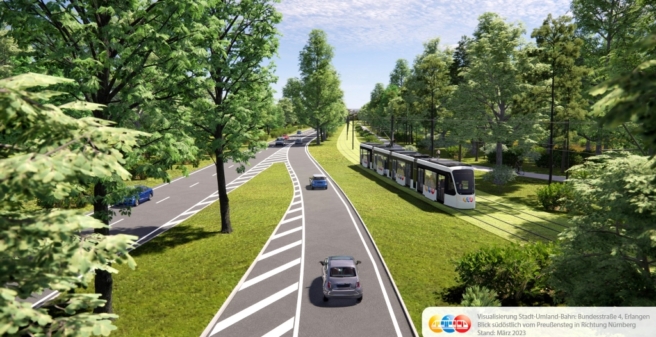
It has been planned for many years, and after almost endless and constantly renewed discussions, especially at political level, construction should now finally begin in the near future. We are talking about the approximately 26 km long connection between the three cities of Nuremberg, Erlangen and Herzogenaurach within this densely populated part of Central Franconia by means of a modern interurban light rail, which also fulfills important functions in terms of urban transport. The large-scale project is known as the Stadt-Umland-Bahn (StUB). But there is another hurdle to overcome: On 9 June 2024, the city of Erlangen will once again hold a referendum in favor or against the StUB, with the European elections taking place on the same day. The various political parties in the city parliament have taken different positions on this, with the conservative party CSU in particular not supporting the project at all.
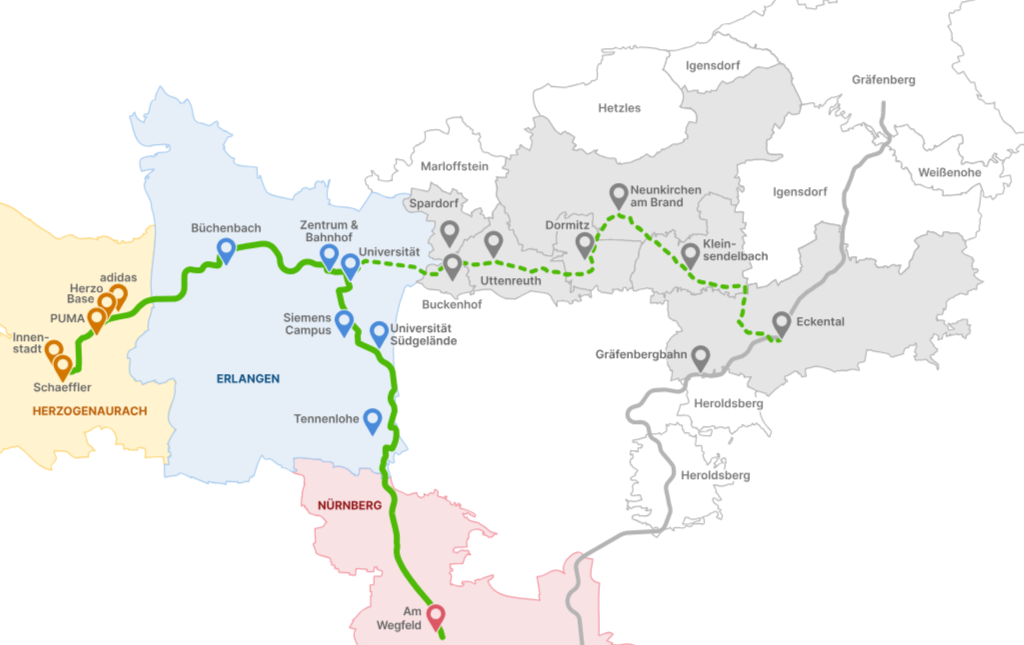
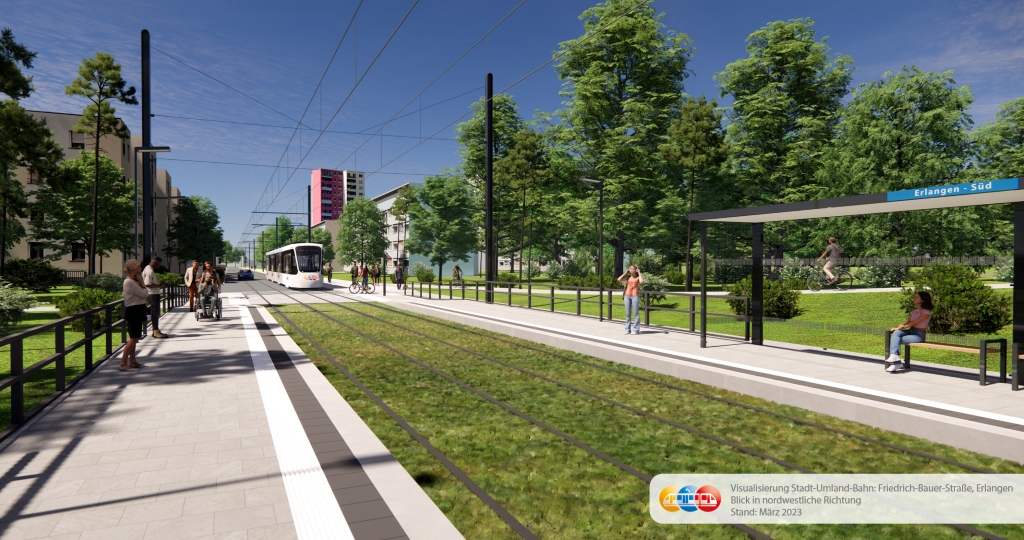
The people of Erlangen had already voted in favour of realising the tram once before, in 2016, when the cooperation agreement between the governing parties in the city parliament CSU and SPD – agreed that a new vote on the StUB would be held as soon as the most important facts for the tram project were on the table. Now the time has come.
As an efficient and sustainable transport alternative, the StUB is intended to meet the steadily growing volume of traffic and mobility needs and connect residential, educational and business locations in the region. As part of an intensive participation process lasting several years, the special-purpose association Zweckverband Stadt-Umland-Bahn, which was founded specifically for the realisation of the project, worked with the participating cities to develop an optimised route, taking all criteria into consideration. The Zweckverband Stadt-Umland-Bahn (ZV StUB), with its head office in Erlangen, is responsible for the planning, construction and operation of the StUB. Members of the ZV StUB are the three cities of Nuremberg, Erlangen and Herzogenaurach. The current chairman of the association is Dr Florian Janik, Lord Mayor of the city of Erlangen.
Funding for the multi-million euro project has also already been fully secured: The federal and state governments are covering 90% of the eligible construction and planning costs. According to current cost estimates, this results in city shares of around 27 million euros for Nuremberg, 82 million euros for Erlangen and 22 million euros for Herzogenaurach. With total costs of around 635 million euros for construction and around 95 million euros for planning, more than half a billion euros of earmarked funding – i.e. exclusively linked to the StUB project – will flow into the region. There is also clarity regarding the future operating and maintenance costs for the StUB: these are offset by passenger revenue and savings in the bus network. According to current calculations, the StUB will cost the city of Erlangen around 10% of the loss compensation for urban transport. In 2022, this was around 12 million euros, so 10% corresponds to around 1.2 million euros.
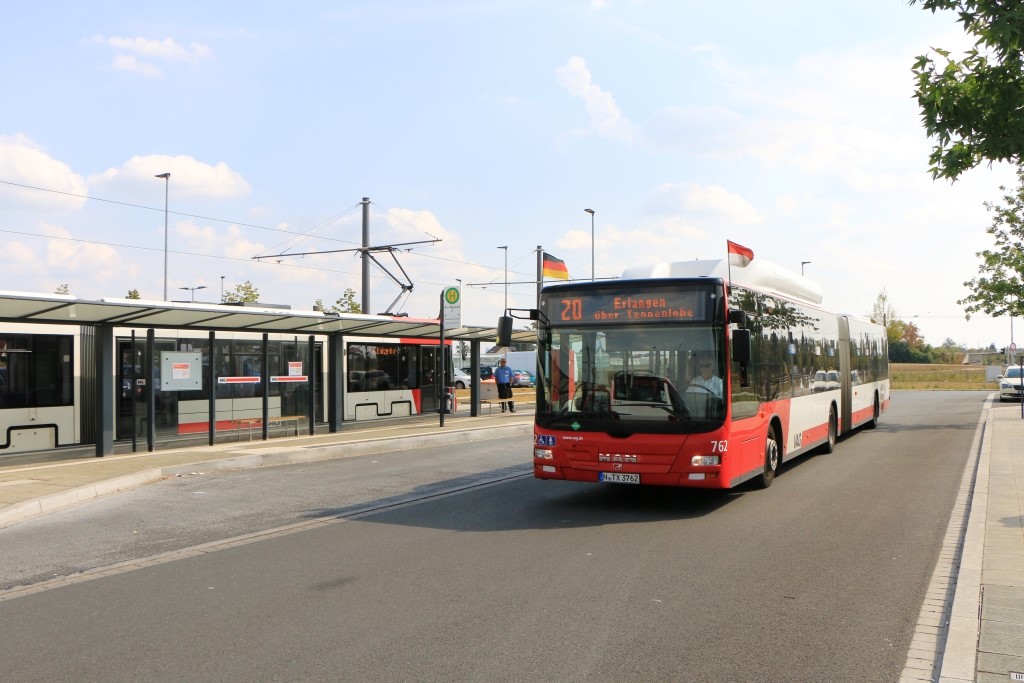
But what are the benefits of the StUB? “It’s not about realising the fastest connection from the terminus in Herzogenaurach to the main railway station in Nuremberg with the StUB in the future,” explains Mandy Guttzeit, Managing Director of the Zweckverband Stadt-Umland-Bahn, “but about creating attractive and barrier-free connections to existing transport systems, such as bus and train, but also bicycle and car. The example of the new Wöhrmühlbrücke bridge makes this particularly clear: for example, employees of the Klinikum am Europakanal hospital will be able to reach the station in Erlangen in around ten minutes using the StUB to board the train to Nuremberg – this corresponds to a journey time reduction of around 60 %.” The new Regnitz crossing will also benefit Erlangen’s bus network as well as emergency and rescue vehicles.
In addition to local residents, various large companies such as Siemens, Adidas, Puma and Schaeffler are also particularly interested in the realisation of the plans and have aligned their site planning accordingly, as has the university.
It therefore remains to be seen how the voters will decide in June and whether it will be possible to gain the necessary support for such a major infrastructure project from the population of the city of Erlangen, which has a population of approximately 118,000.
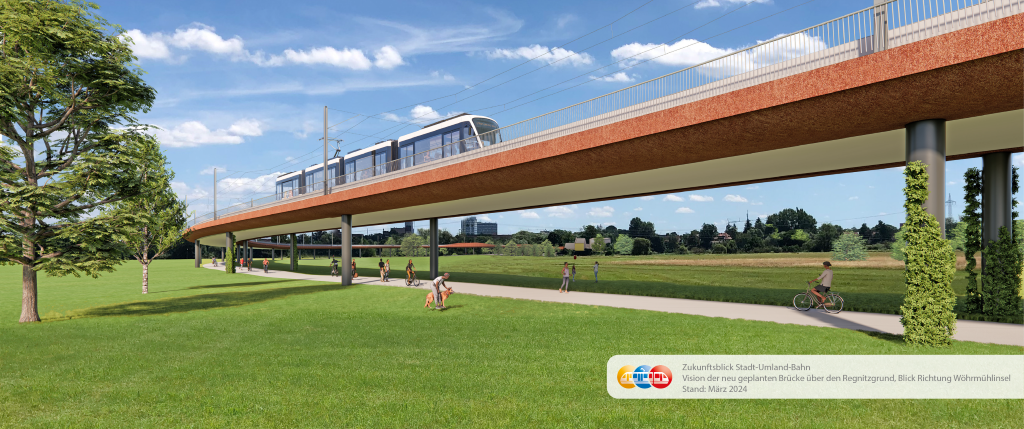
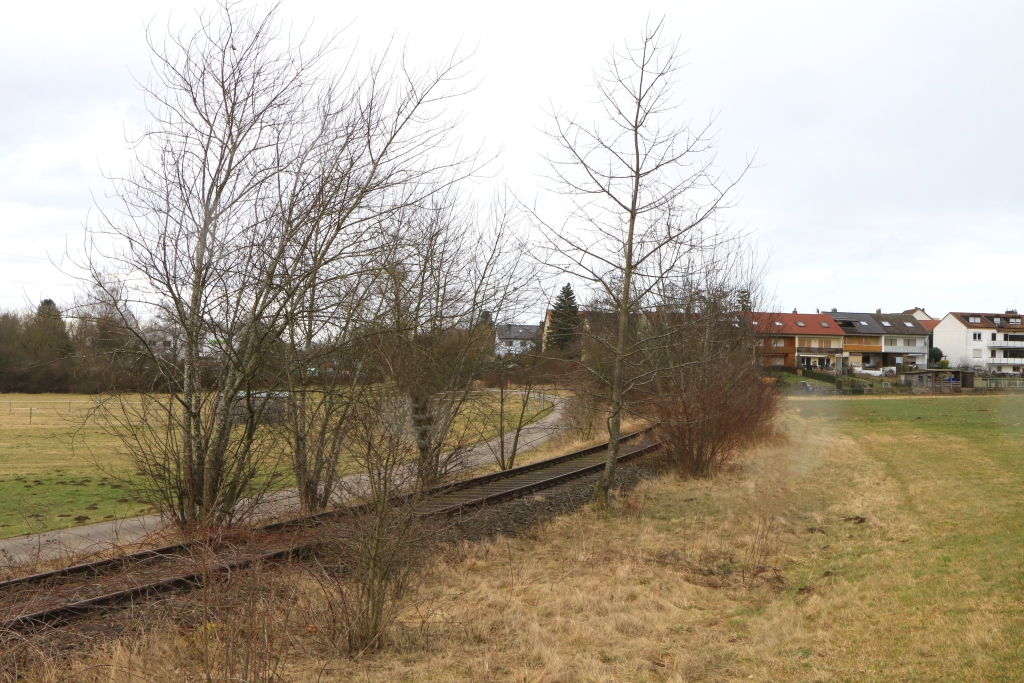
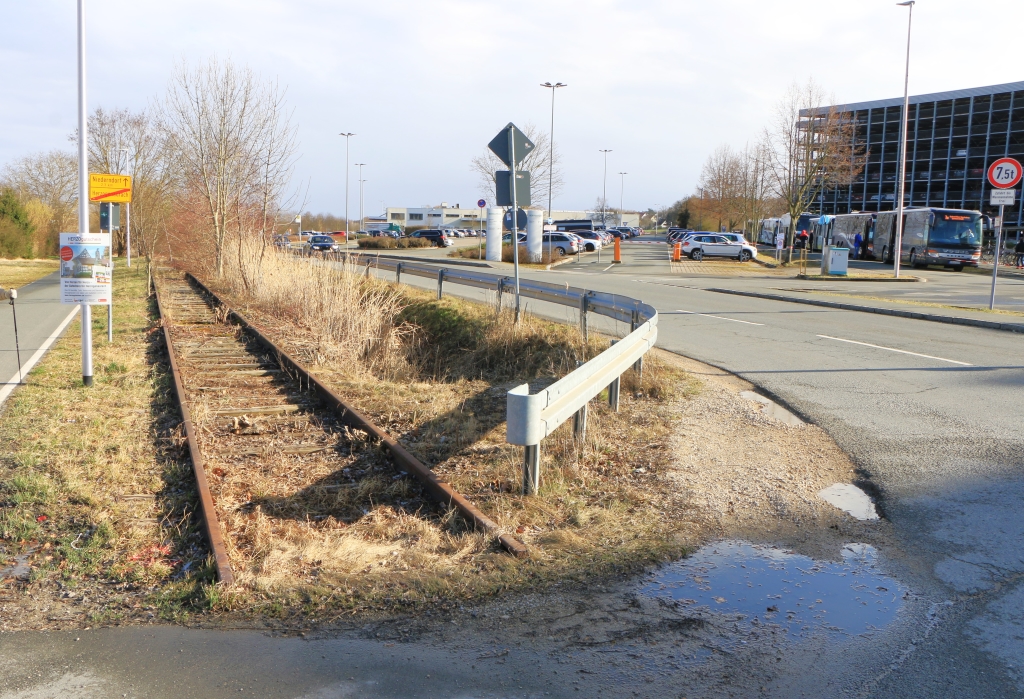
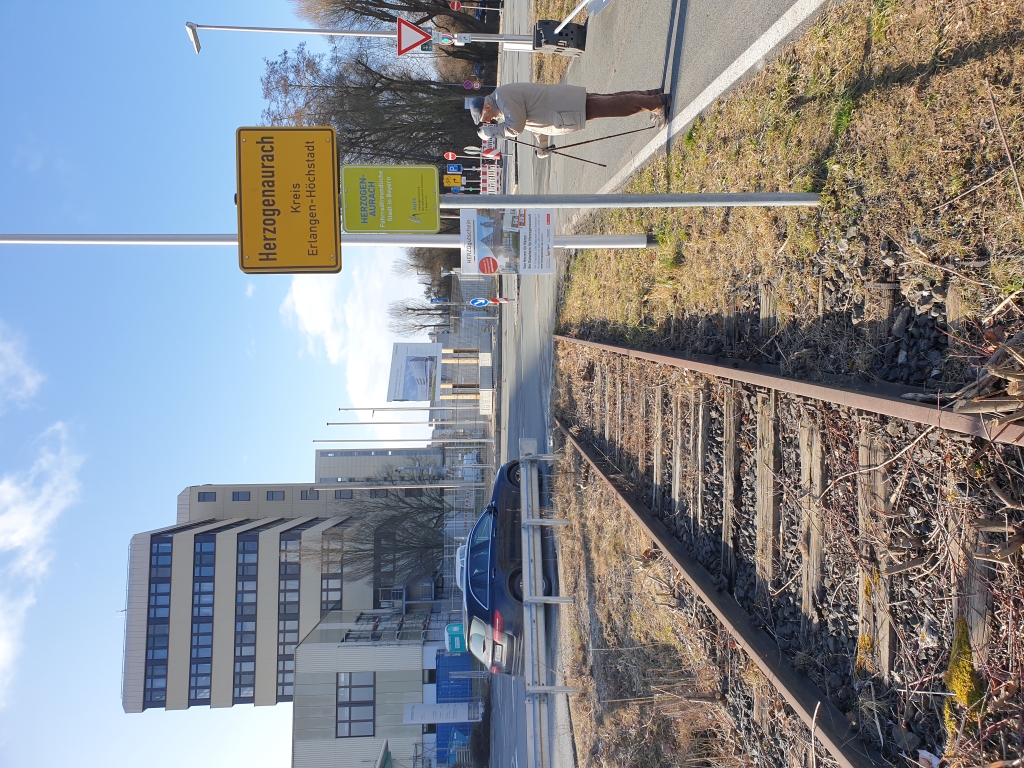
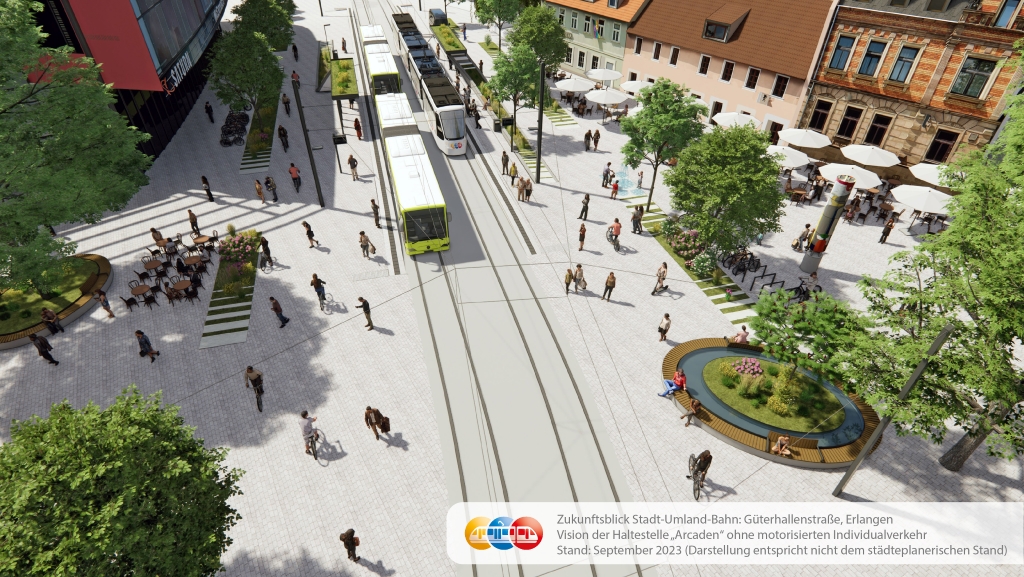
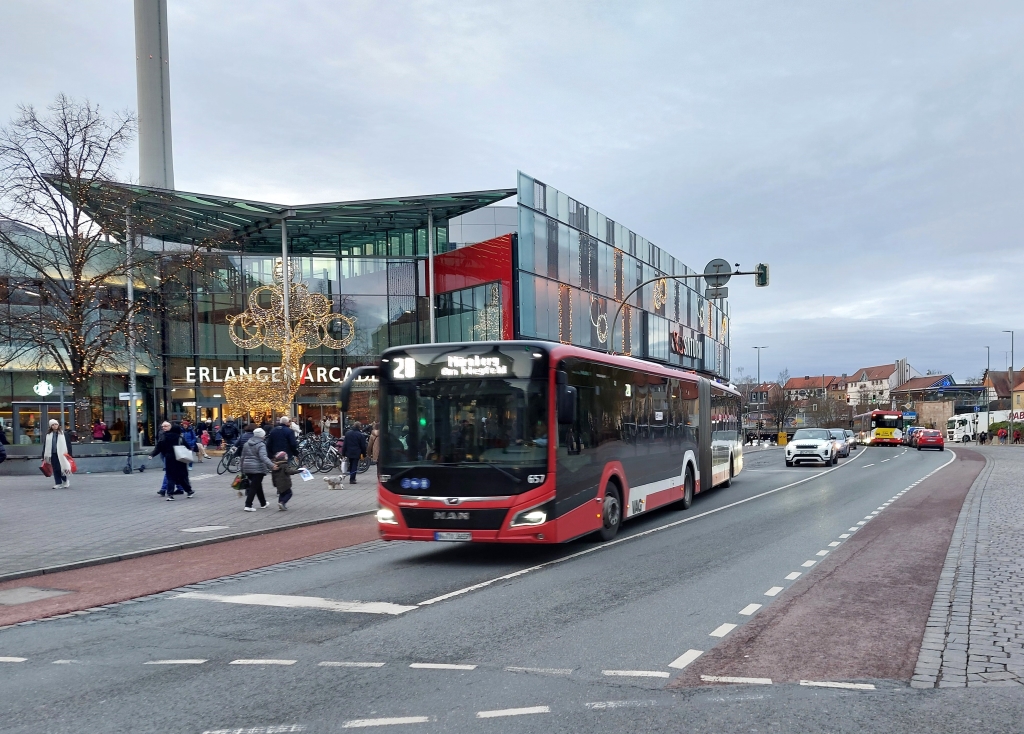
(click on the photos to enlarge)
11.03.2024
